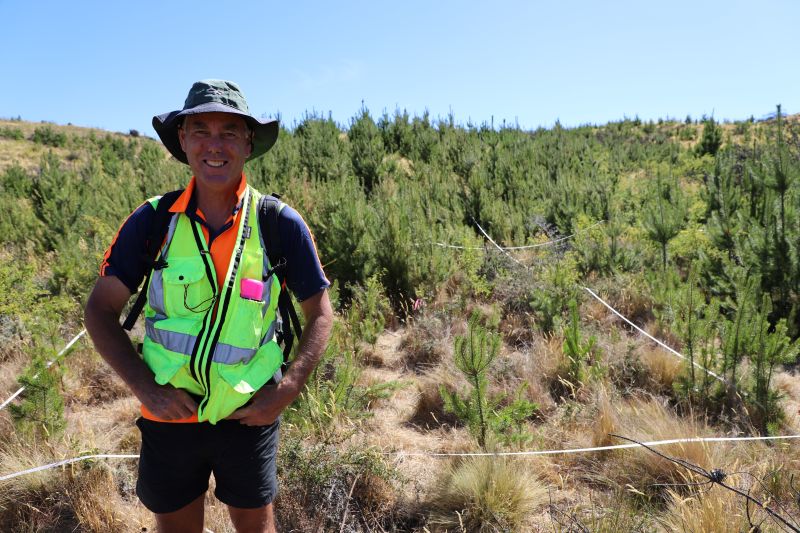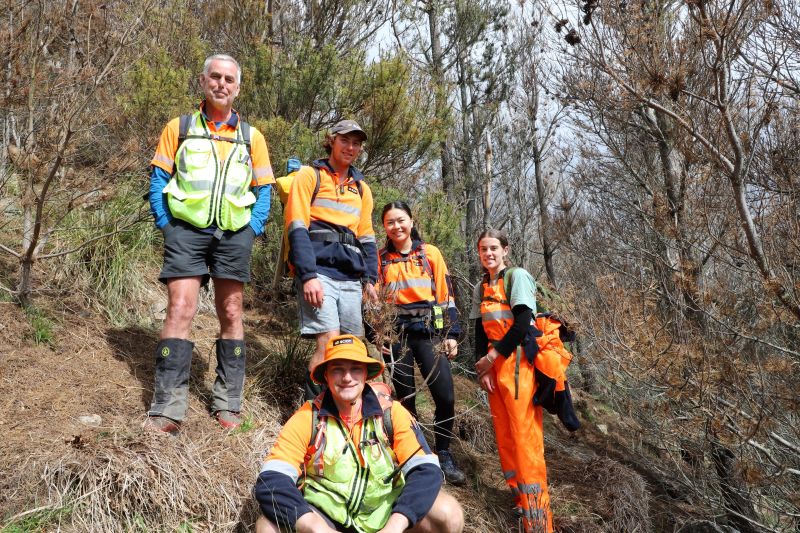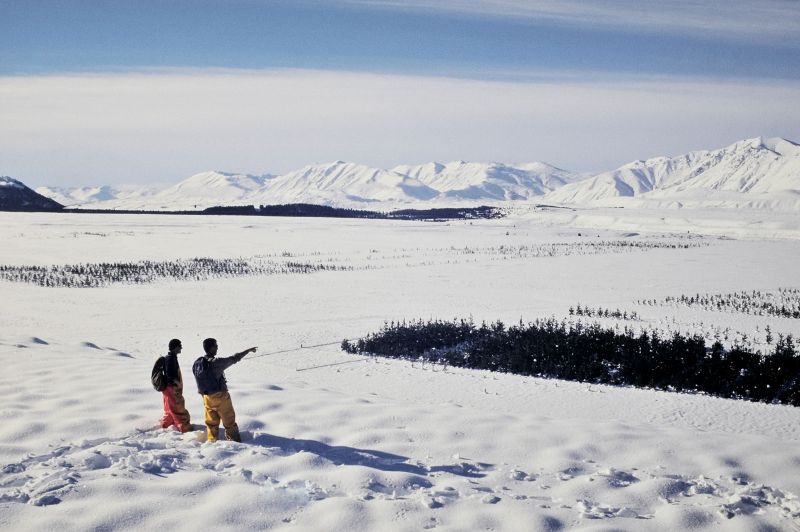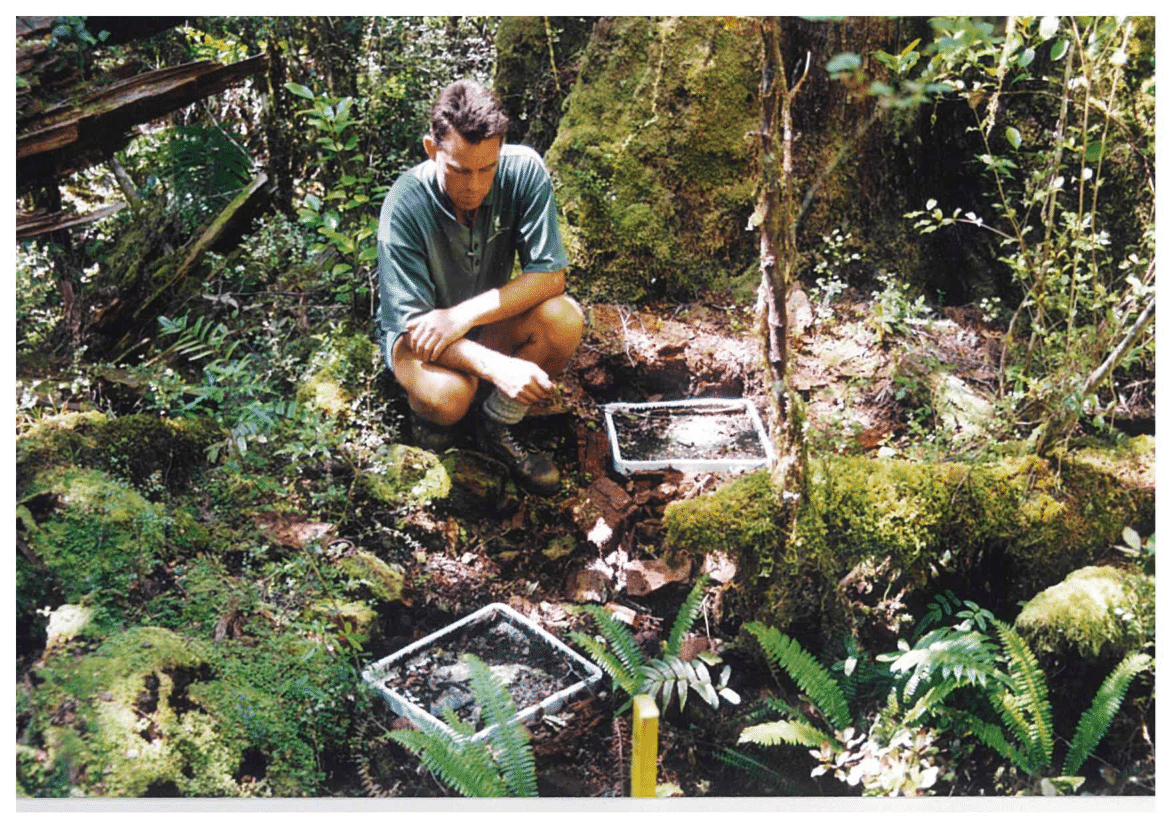Celebrating a long and varied career

There are probably few corners of Aotearoa that Dave Henley hasn't set foot in over his remarkable four-decade career in forestry.
From jaw-dropping kilometres on foot, to months away from home, to battling relentless weather and rugged bush, Dave has done it all—and done it with heart. His deep love for New Zealand’s native landscapes, paired with his unwavering dedication to the bigger environmental picture, has left a lasting influence on both the land and the people he’s worked with.
Craving the outdoors more than the confines of a classroom, Dave left school in 1978 after sixth form (Year 12). He began his forestry journey training as a woodsman in Ashley Forest, then spent time in the Bay of Plenty at Rotoehu. But it was the pull of the South Island that brought him home—and into a job with the Forest Research Institute, now Scion, where he would stay for the next 43 years.
After joining the mensuration team—now known as the tree biometrics team—Dave excelled in a role that supports a wide range of researchers and their diverse needs. His contributions have been central to nearly all of Scion’s forestry-related research, which has become a defining strength of the organisation. “The role is always evolving—we adapt to whatever’s needed,” he says. “But one thing stays the same: you have to be field capable.”
By that, Dave means both physically and mentally fit. “You’re out in the field all the time. It’s tough work, and mental resilience is even more important than physical fitness. I’ve seen people struggle out there. You’ve got to be grounded and genuinely interested in your surroundings—whether that’s spotting a bird or identifying a unique tree species. That curiosity makes all the difference.”
Forest Nutritional Ecologist Project Leader Graham Coker says Dave’s field determination is a legacy highly admired by all the colleagues he’s mentored over time—so much so that they would often say with pride, “I managed to keep up with Dave today!” Yet even on a good day, only a few ever matched his efficiency in the long run.”

Dave talks passionately about the amazing remote places he’s worked in—particularly Fiordland and Stewart Island. One highlight? A three-week stint incorporating Chew Tabacco Bay, Port Adventure, Lords River, and Toitoi Bay on the eastern side of Stewart Island. “We were out there measuring timber volume, tramping 5km inland from the coast each day. It could be hard going, but when you’ve got kiwi poking around your feet… well, it’s hard to beat. Sometimes it really did feel like a working holiday.”
Another standout in Dave’s career has been his work on the Ministry for the Environment’s LUCAS programme, which supports New Zealand’s efforts to tackle climate change. This work led to the country’s first continuous National Forest Inventory, helping track the health of our forests and how much carbon they can store.
Programme Lead Thomas Paul says Dave played a vital role in making sure forest measurements—especially in both planted and native forests—met the high standards needed. “Dave brought a really rigorous approach to auditing field teams, many of whom were less experienced. He was essential in maintaining the quality we needed,” Thomas says.
For Dave, it was eye-opening work: “Being part of LUCAS audits really changed how I looked at things. It’s a huge data effort, and it’s raised the bar for how we do other trial work too. It keeps us focused and working toward something much bigger.”
Thomas adds, “Dave really was one of the key people making sure New Zealand’s greenhouse gas accounting is accurate. Experts like him—who can work precisely in tough field conditions—are becoming rare. His measurements support everything from carbon stocks to timber volume and forest growth models.”

Some assignments pushed Dave to his limits, like the two six-month winter stints on the West Coast near Lake Brunner, studying dieback in rata and kamahi forests. “It was very physical. We had to lug cement up steep hills to set up weather stations around trees. That area sees snow and vast amounts of rain - character-building stuff.”
Dave’s incredible field knowledge and attention to detail have built a reputation and legacy of trust across the industry. The data he has collected underpins countless scientific studies over the years, at least 228 documents of all types. “That’s something I’m really proud of—consistently providing high-quality data that scientists can rely on. I’ve tried to pass that mindset on to the younger ones coming through.”
He’s also known for his great spatial memory when it comes to trial sites. “These days, everyone’s glued to GPS. But I still work off landmarks—at least, until they cut the trees down!” he laughs.
Senior Scientist and Portfolio Leader for Establishing Indigenous Forests, Simeon Smaill, shares this tribute: “Dave Henley has accumulated a vast store of information about trials across the South Island—covering an incredible range of species, treatments, and conditions. His insights are still shaping our work today. With Dave and the field team guiding us, we’re able to build on decades of research without reinventing the wheel.”

Reflecting on his time at Scion, Dave says, “It’s special seeing trials I helped start now going into their second rotation. It’s hard to find places I haven’t been now—which says something after all these years.”
As Dave heads into retirement, he has no plans of slowing down. There’s plenty on the cards: gardening, tramping, woodworking, volunteering, pest control, and maybe even a bit of travel. “My wife and I bought a six-hectare section over 30 years ago and planted it out in natives. It’s a low-maintenance garden now, and I’ve applied a lot of what I learned in the field.”
He also plans to lend a hand at the local wildlife park in Christchurch, helping with maintenance. “I also want to get into the hills and beech forests, helping with pest management and making a difference. It’s a good way to stay fit too."
His parting wisdom?
With any work, there are ups and downs. As long as the ups outnumber the downs—and you enjoy what you do—stick with it. And enjoy your surroundings. Not just the work. That’s what makes it meaningful.
